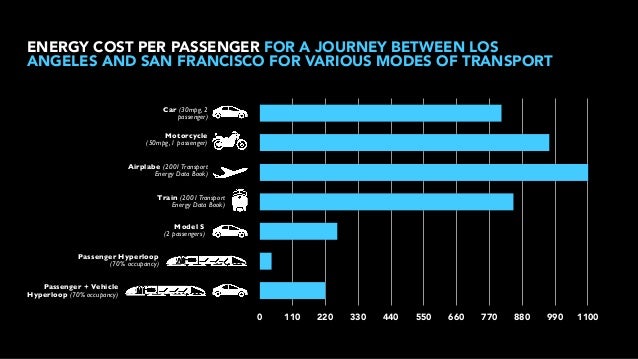Video credits to: Catalysts
An Overview
Hyperloop / Hooverboard 2.0 is a proof-of-concept project of the Hyperloop — a new mode of transport that has the potential to surpass even the speed of an aeroplane.
The Hyperloop boasts the potential of being able to be the next high-speed mode of transport. According to Hyperloop Transportation Technologies, the Hyperloop can reach speeds of up to 750 mph, allowing it to take one from Los Angeles to San Francisco in 30 minutes as opposed to a six-hour drive.
 credits: https://www.slideshare.net/stinsondesign/hyper-loop/24-ENERGY_COST_PER_PASSENGER_FOR
credits: https://www.slideshare.net/stinsondesign/hyper-loop/24-ENERGY_COST_PER_PASSENGER_FOR
While being able to travel faster than most other forms of transport, the Hyperloop also consumes much less energy than them. Such energy savings are perhaps the most attractive part of the concept of the Hyperloop, thus garnering more interest in it as a new, more attractive mode of transportation.
As the Hyperloop also makes use of the concept of magnetic levitation, many might wonder what the difference is between Hyperloop and existing maglev trains. While typical maglev trains require power input into the track to magnetise it, no power is required to be supplied to the conducting track of the Hyperloop. Instead, a linear Halbach magnetic array at the bottom of the vehicle accounts for its own levitation over a conducting track once it reaches a high-enough speed to overcome magnetic drag. This means that the only form of power input would be to propel the vehicle forward. The Hyperloop thus presents itself as a new, improved alternative to existing Maglev trains as well.
For more information on the SpaceX Hyperloop, please refer to this link!
Vision and Objectives
The goal of our project is to create a proof-of-concept prototype using the main concepts of the Hyperloop pod. Mainly, it is to investigate if moving linear Halbach arrays at high speeds over a conducting track (e.g. copper) would really cause magnetic levitation.
This being a proof-of-concept prototype, we aim to keep our setup as compact as possible. Hence, another objective would be to build a setup which allows the vehicle to build up speed to that required for levitation within a small space.
The success of this project could potentially lead to its upscaling to become a test facility for future Hyperloop pod prototypes.
Credits
https://www.usatoday.com/story/tech/news/2016/05/09/la-sf-30-min-hyperloop-wars/84137224/
